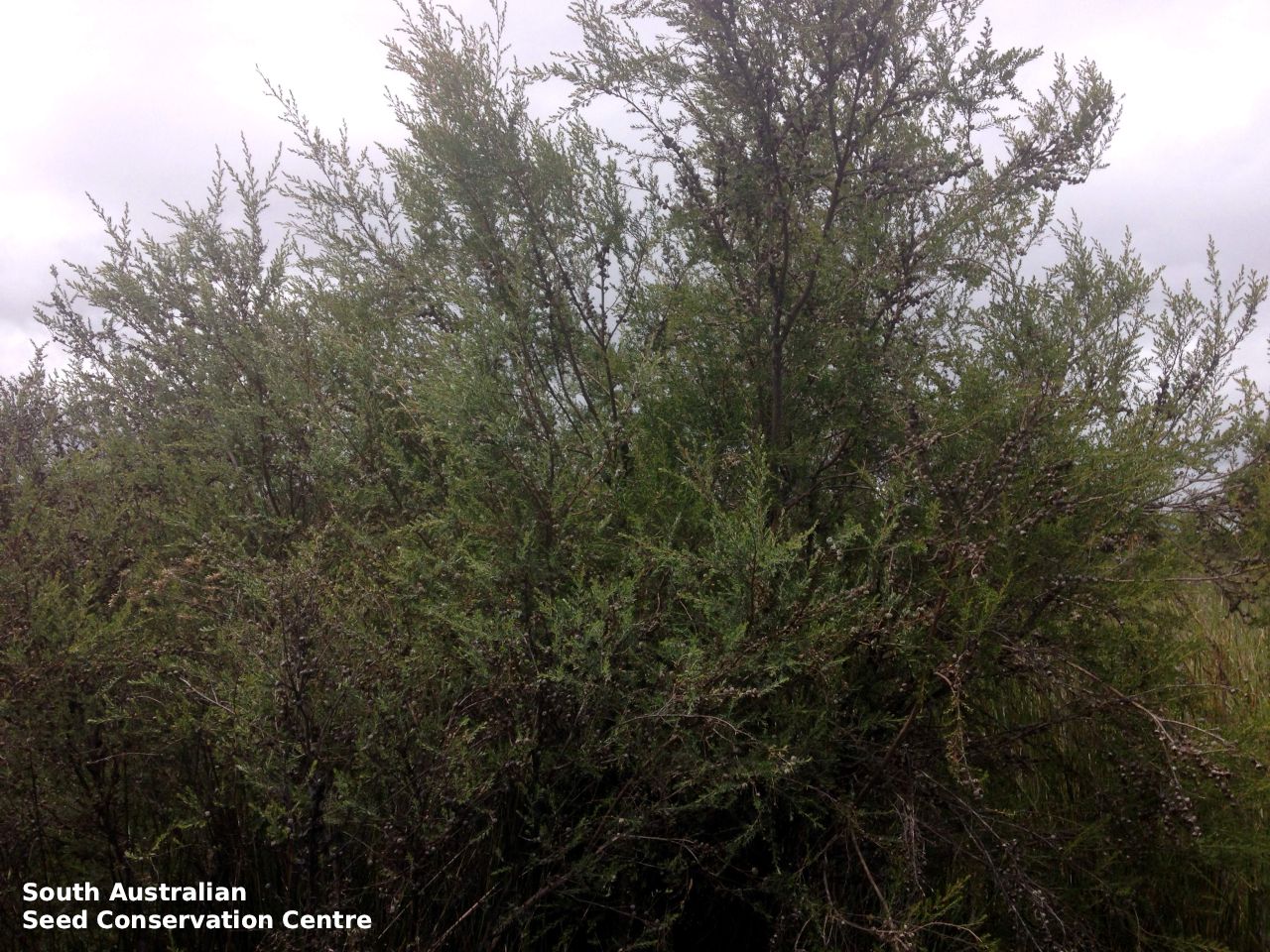
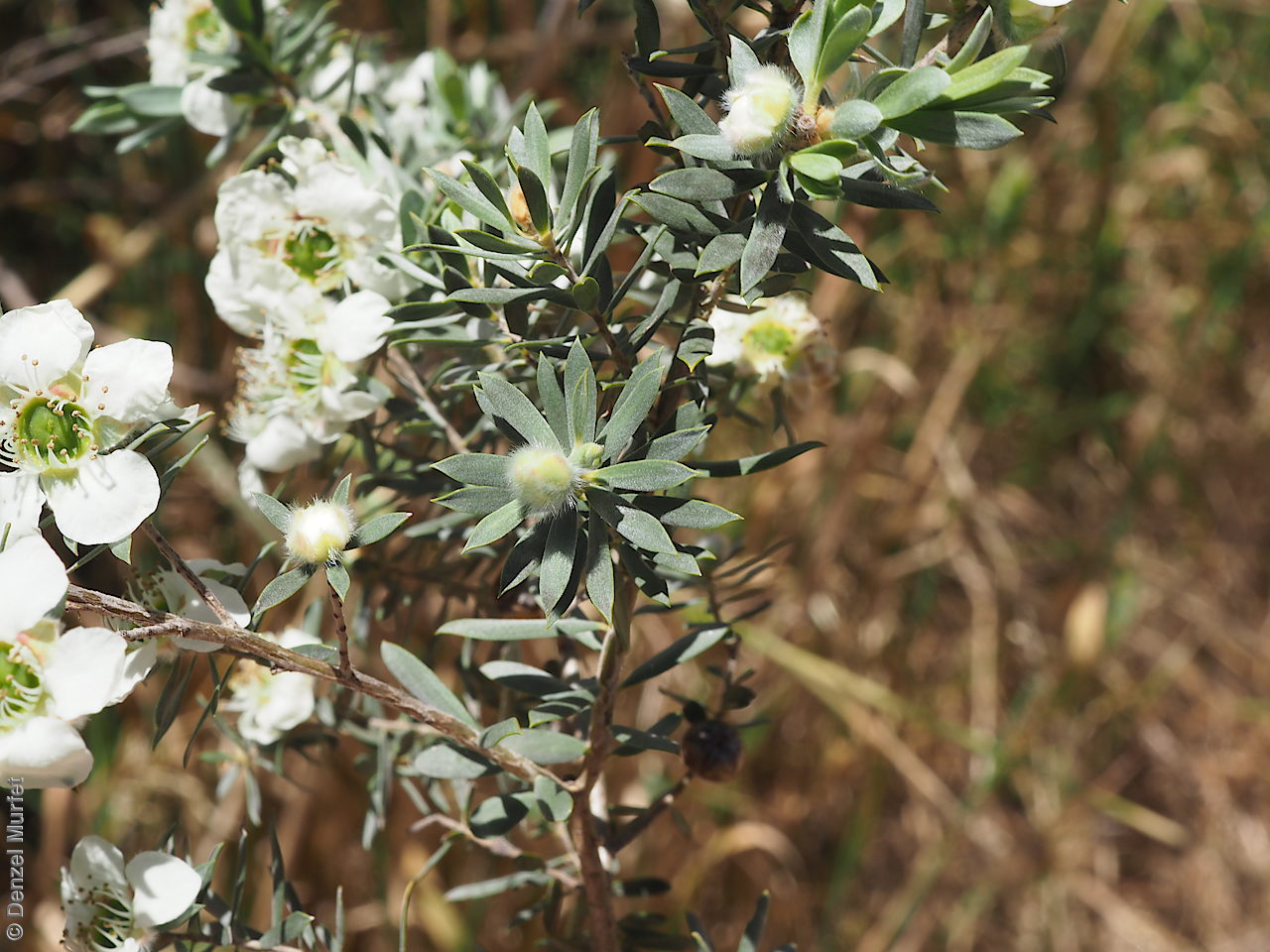
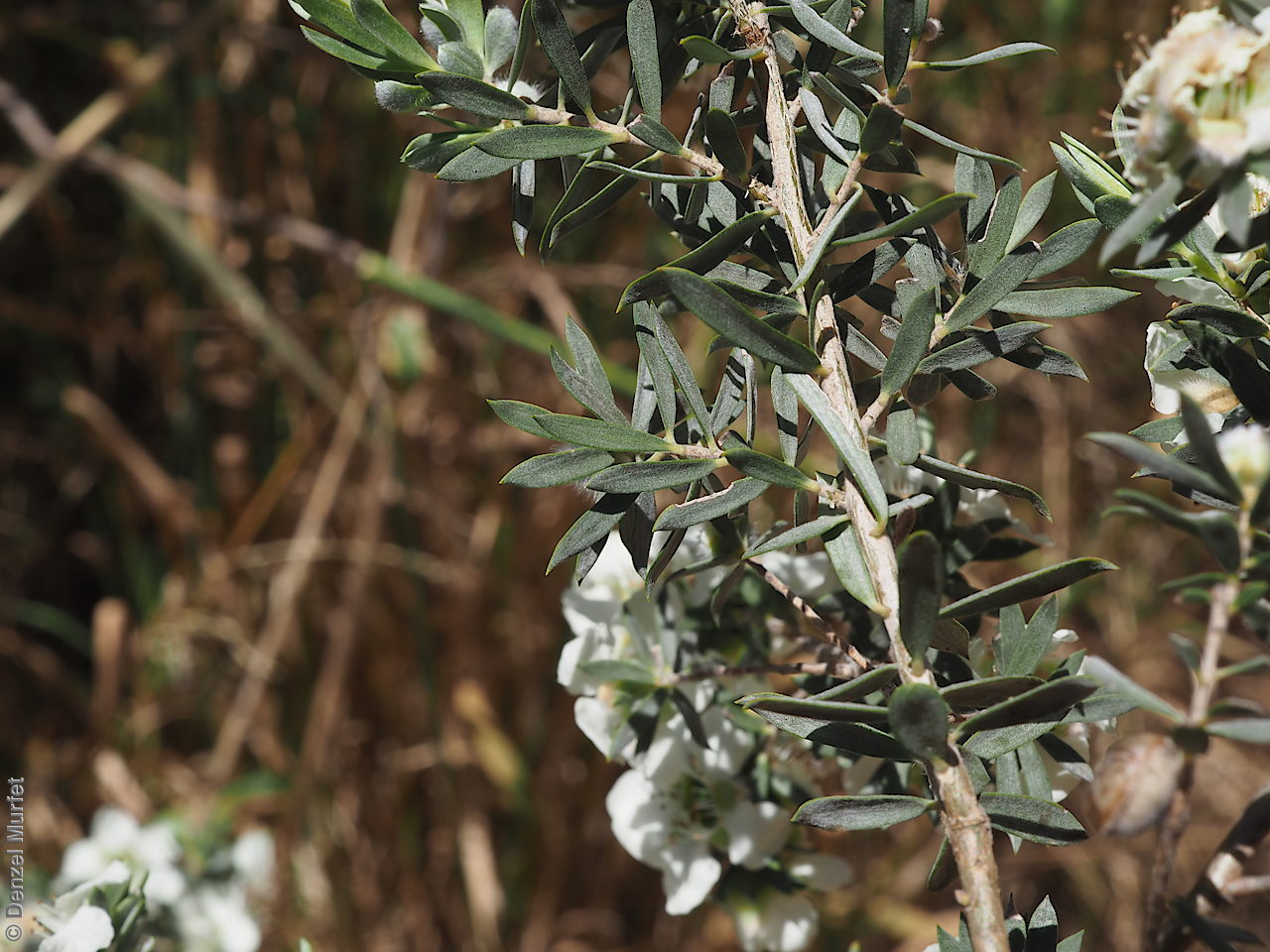
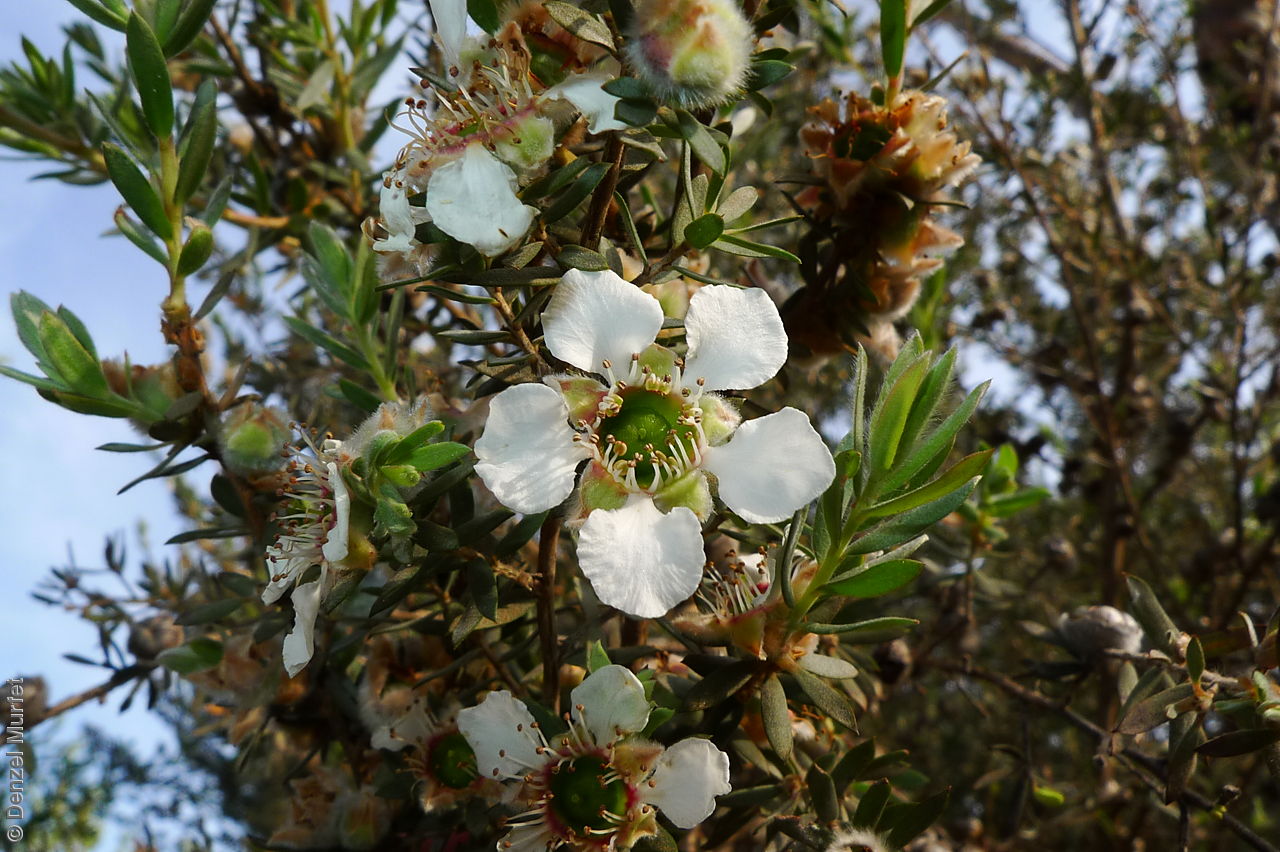
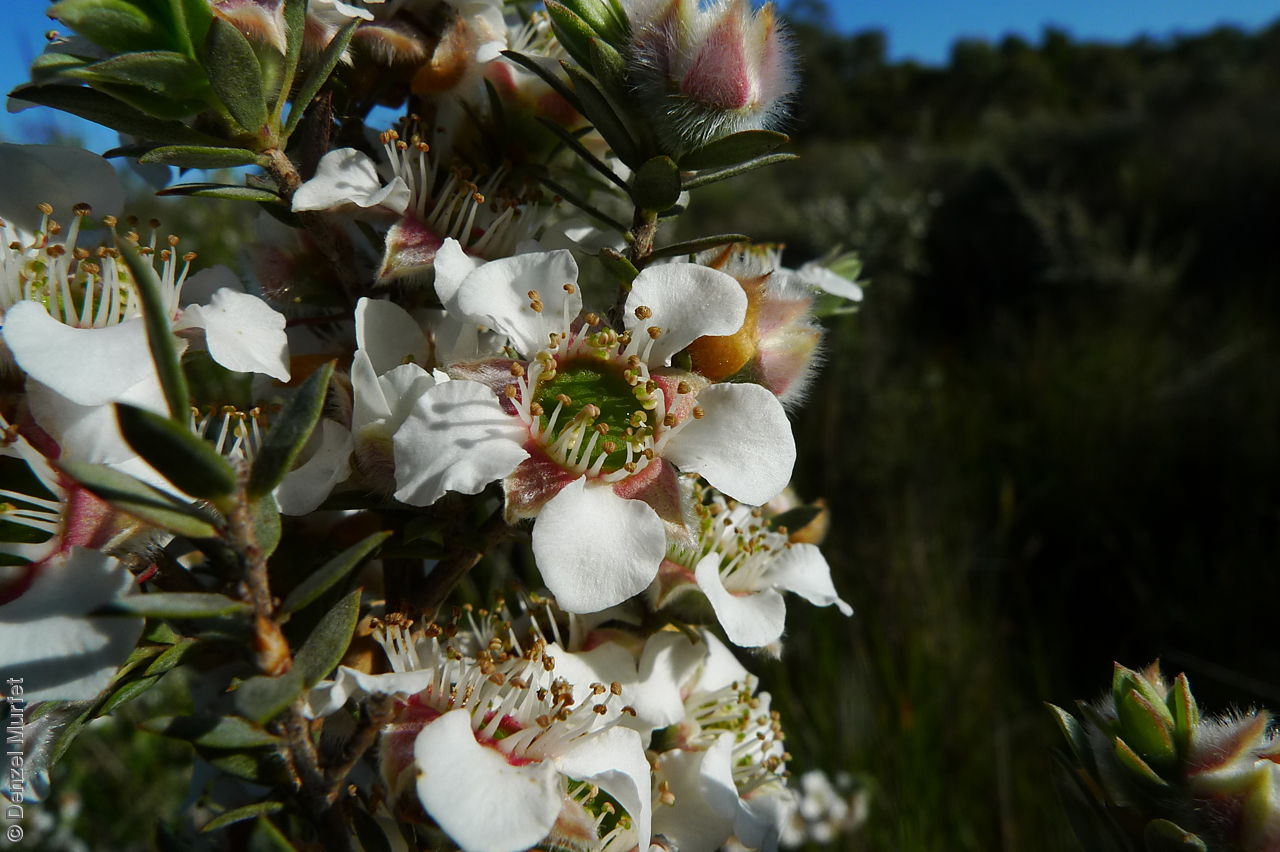
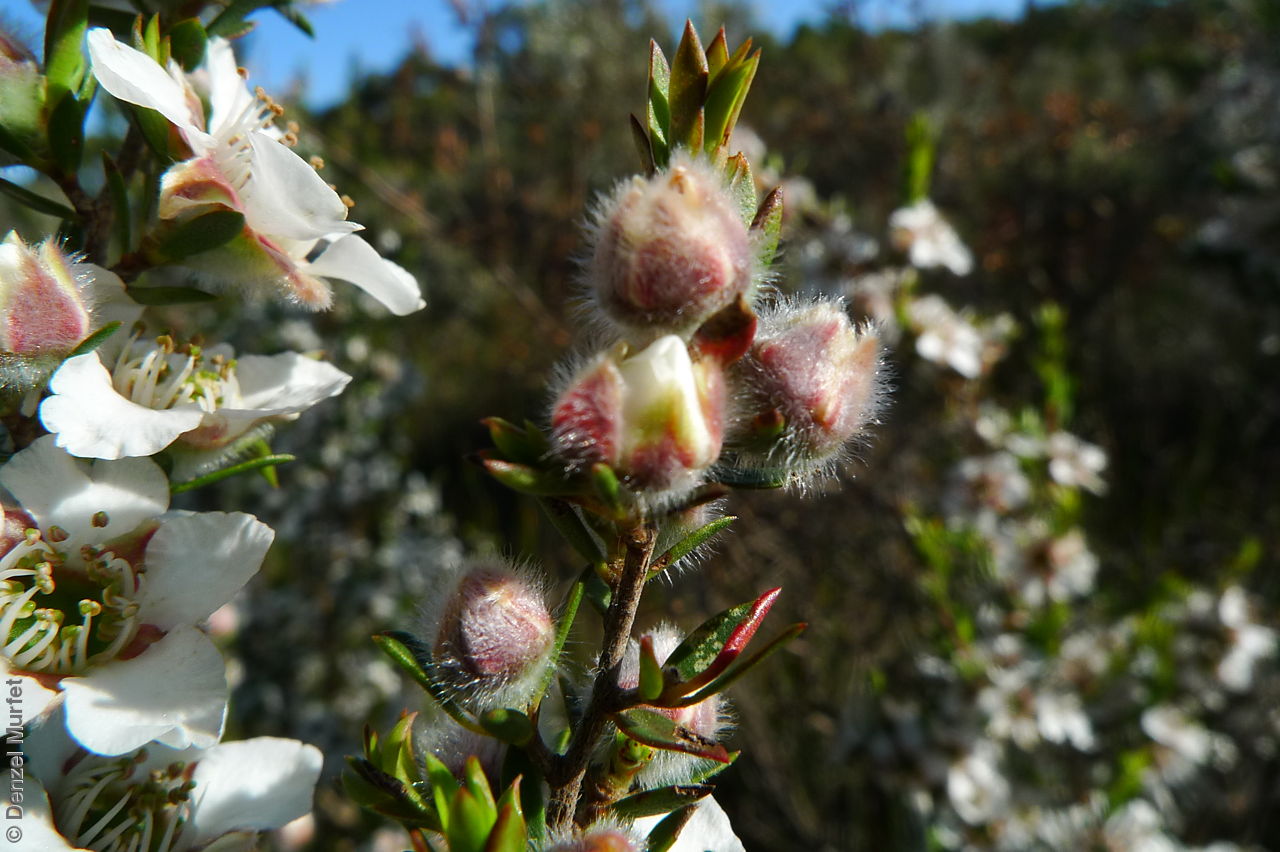
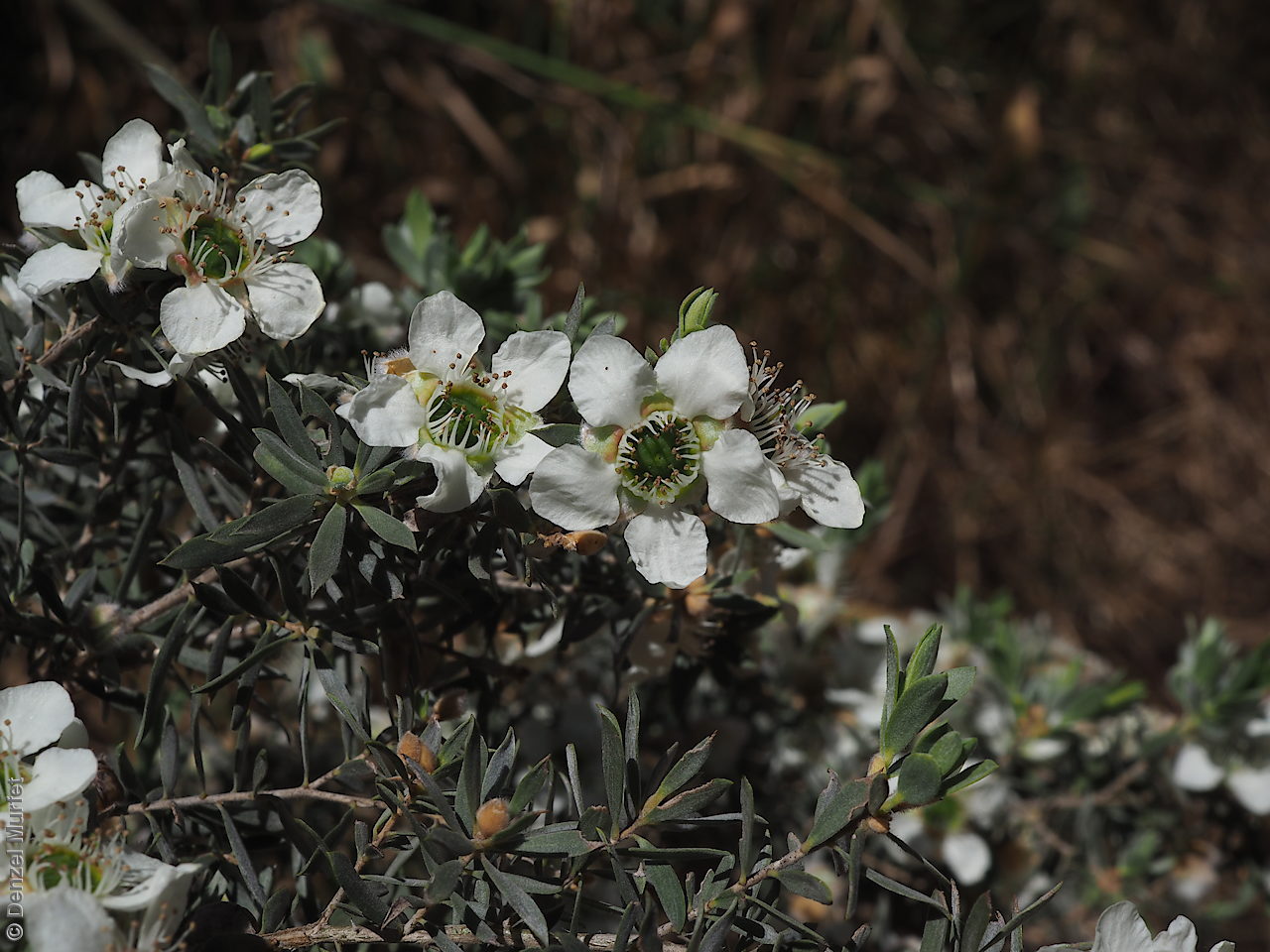
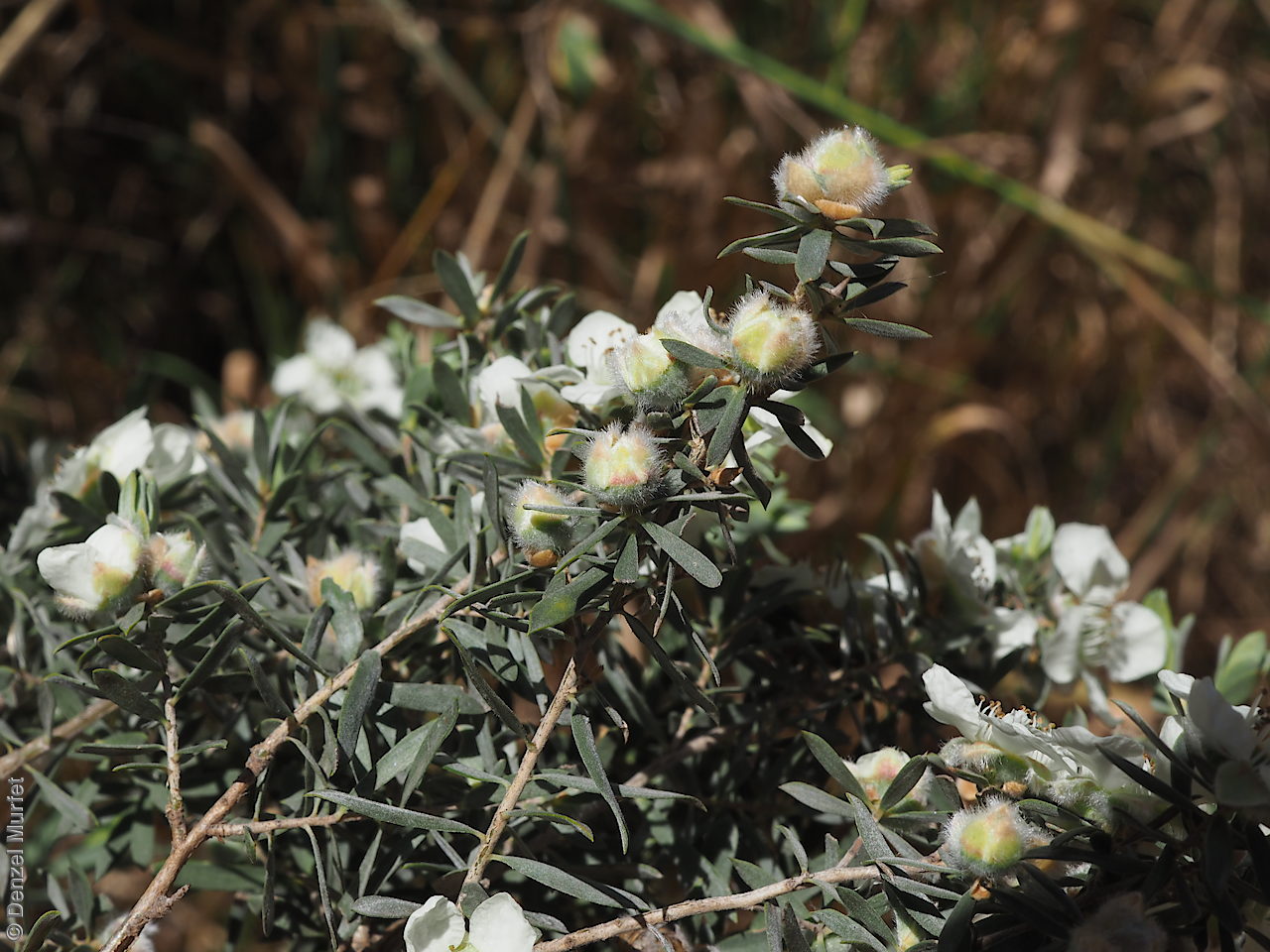
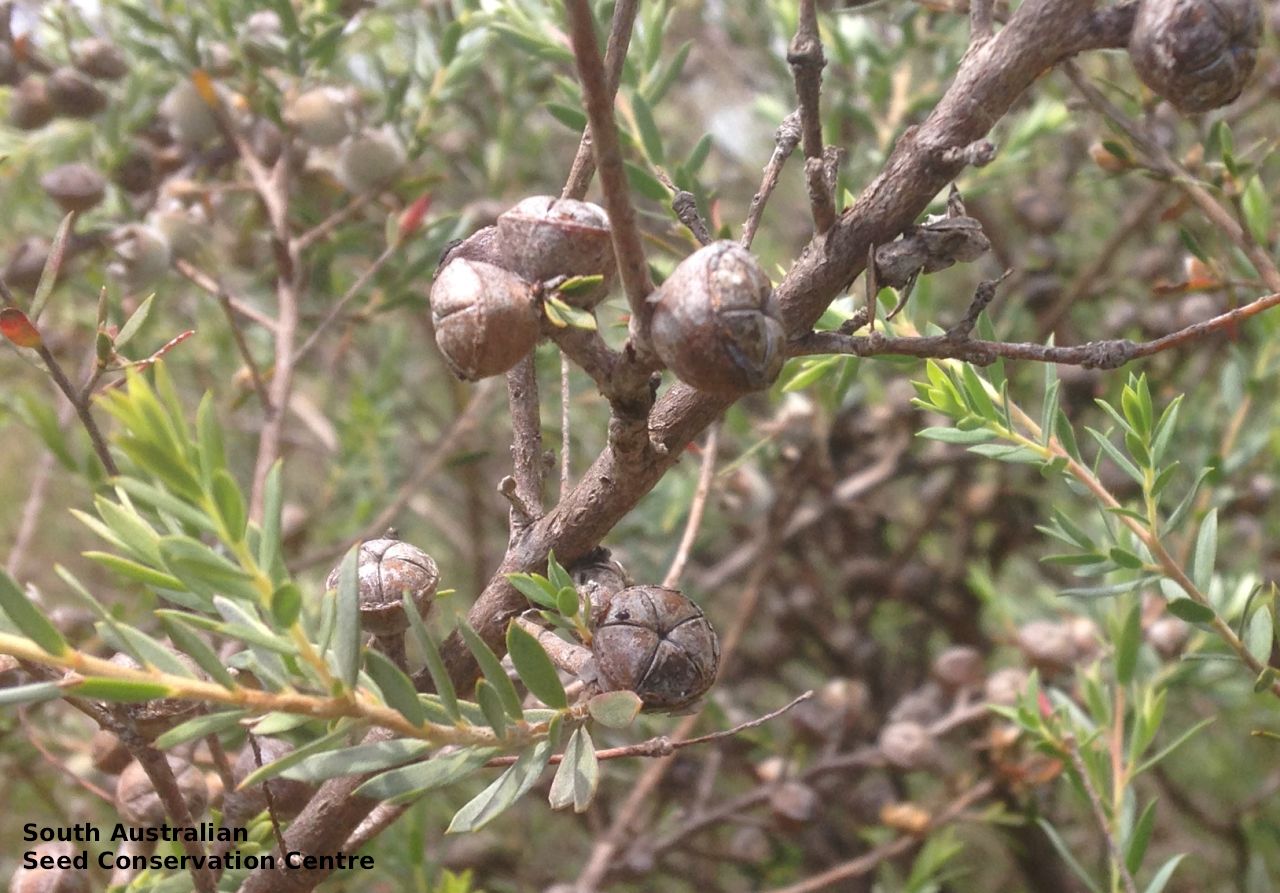
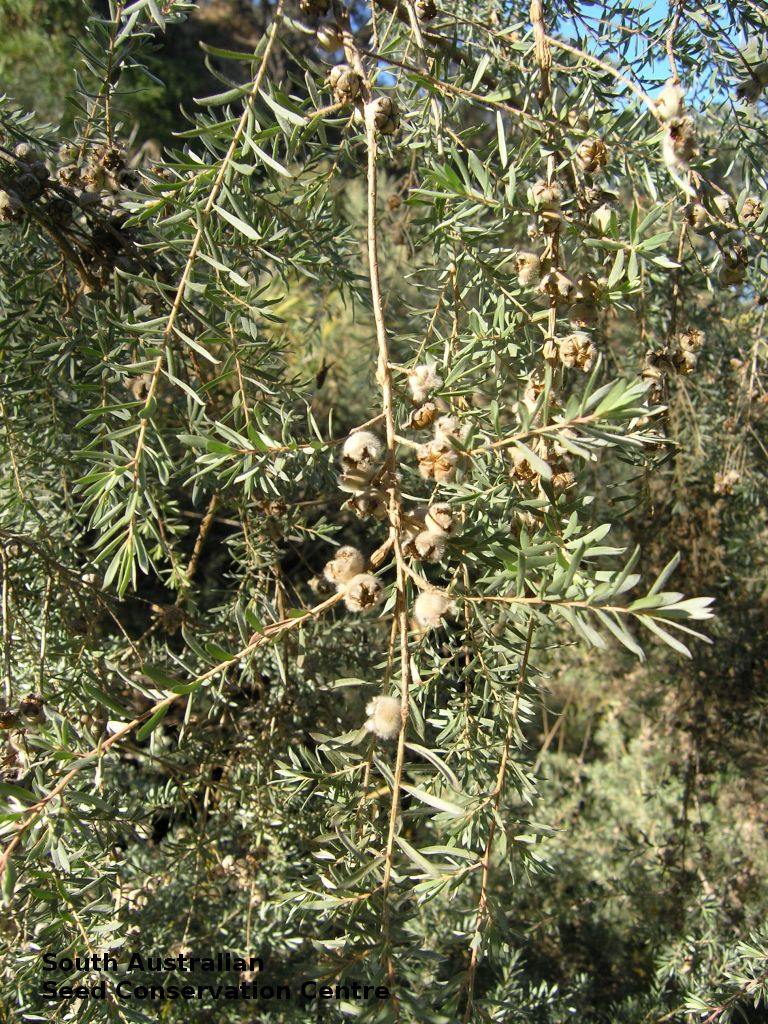
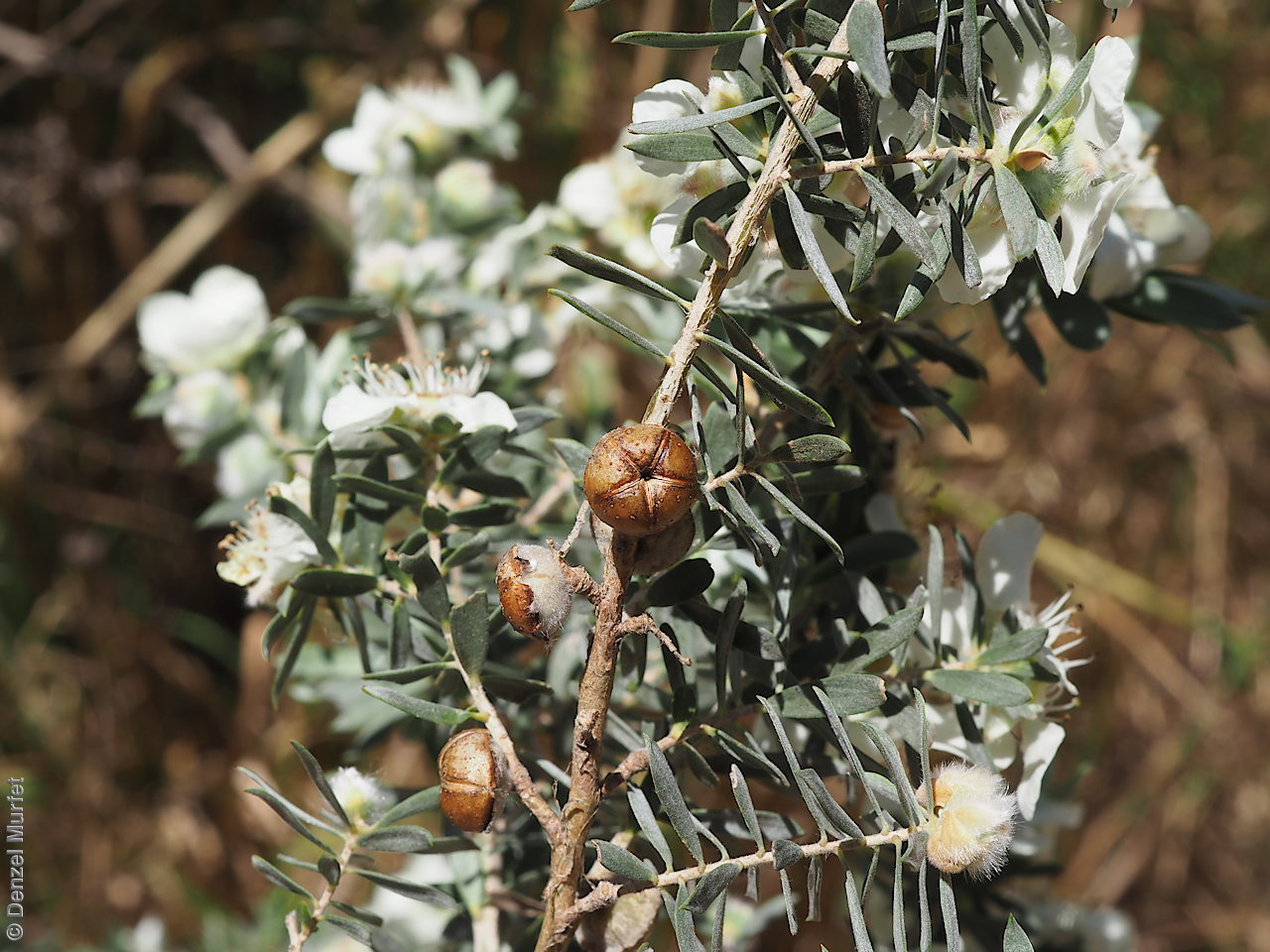
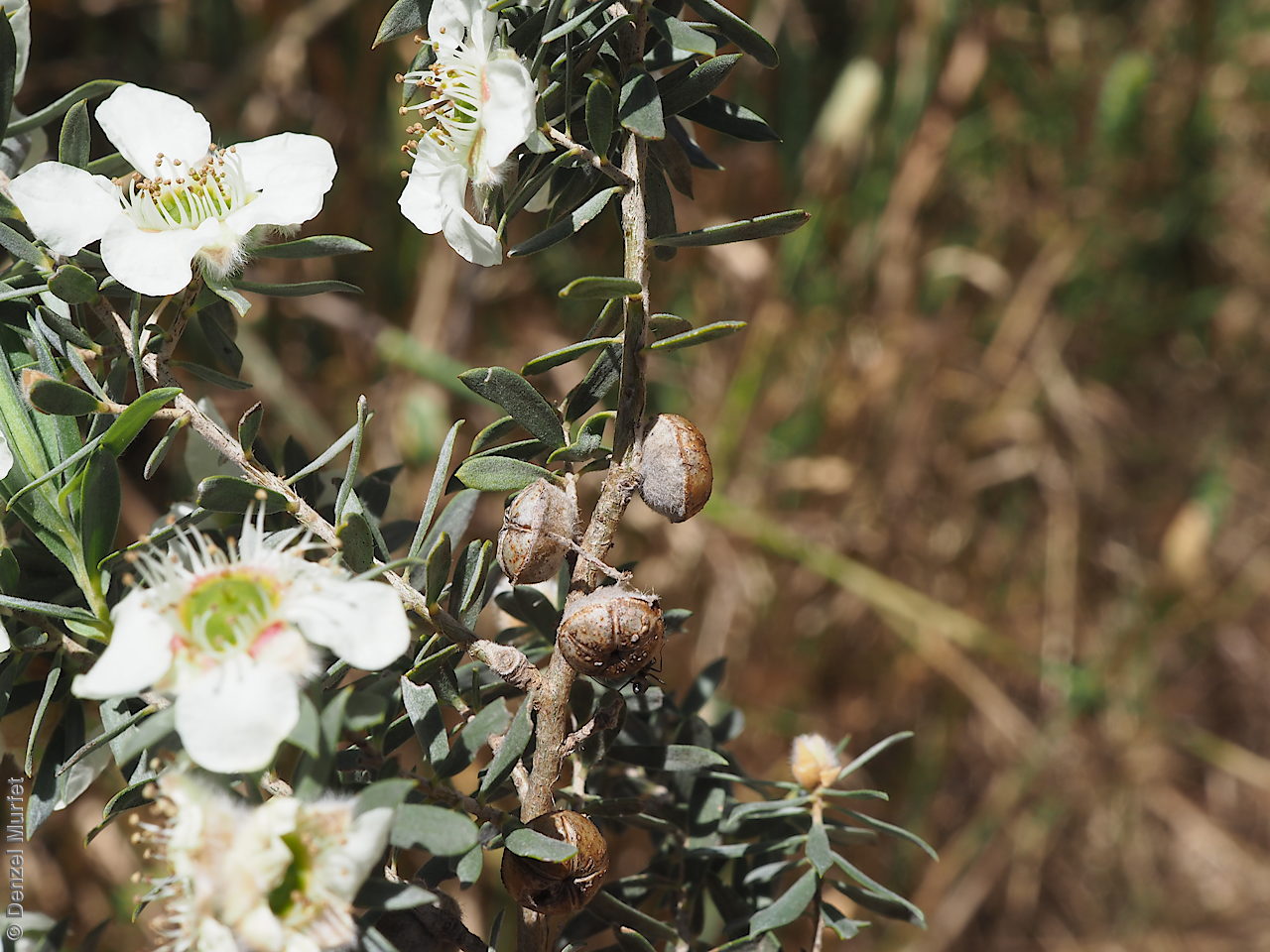
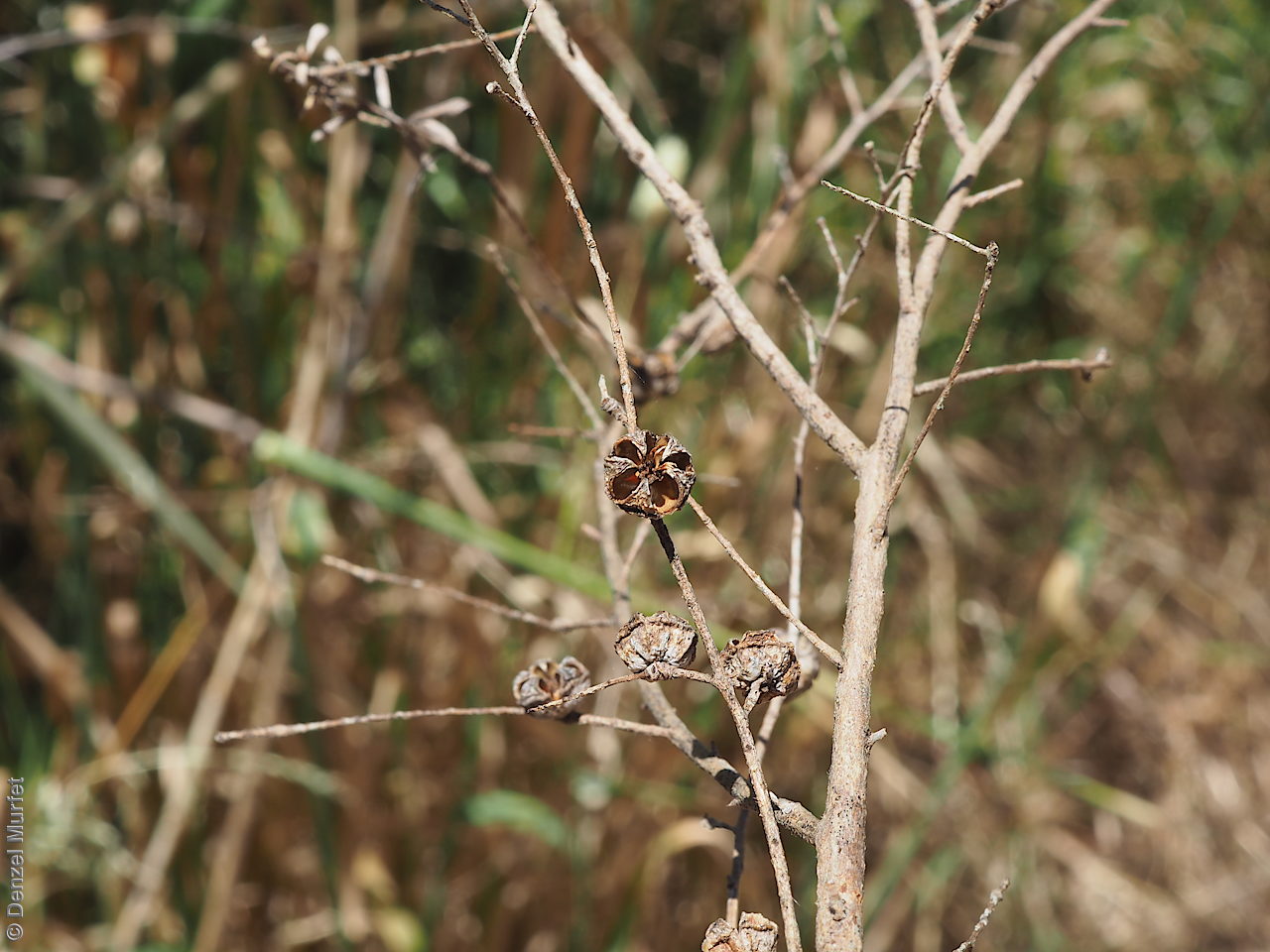
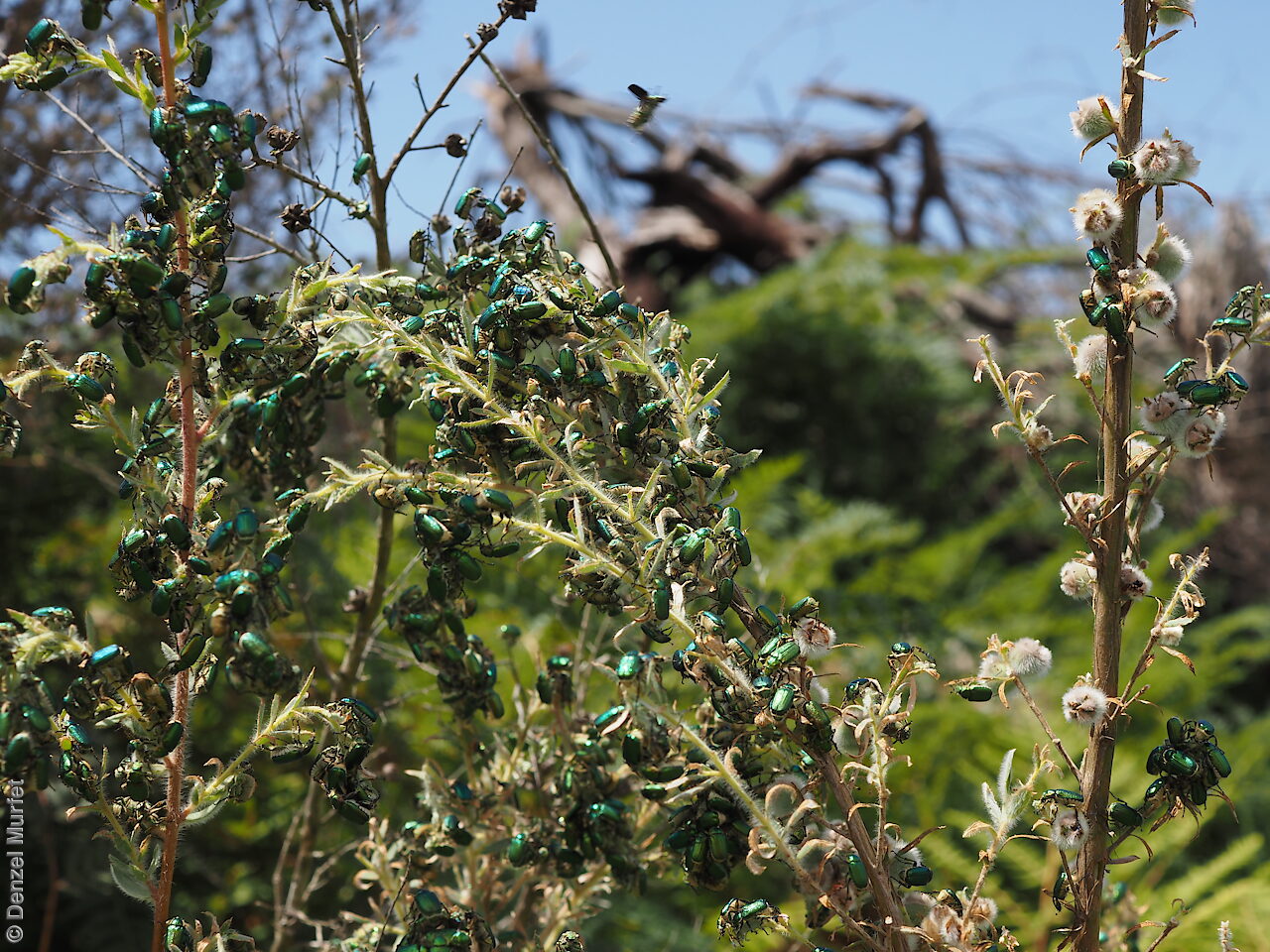
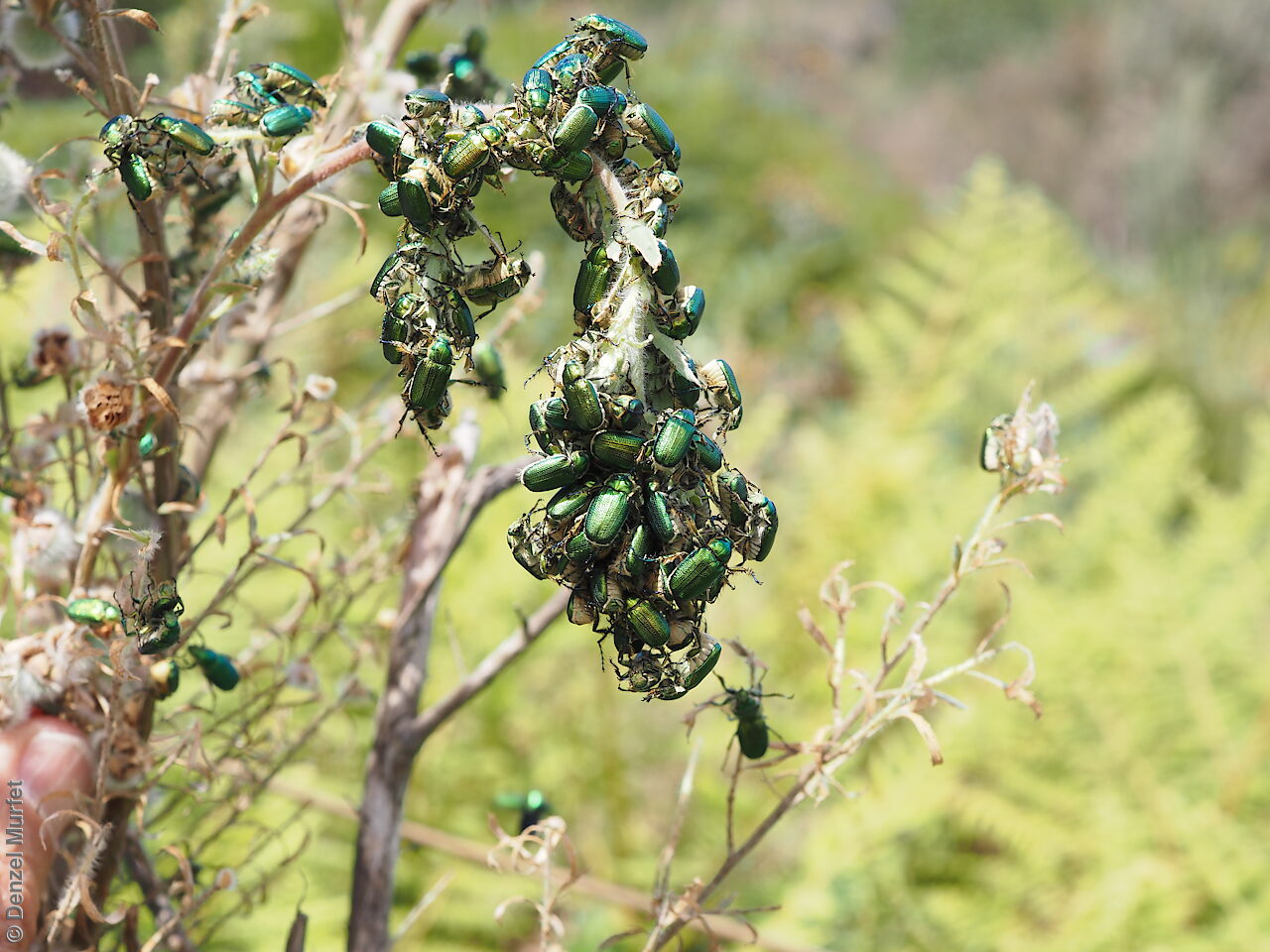
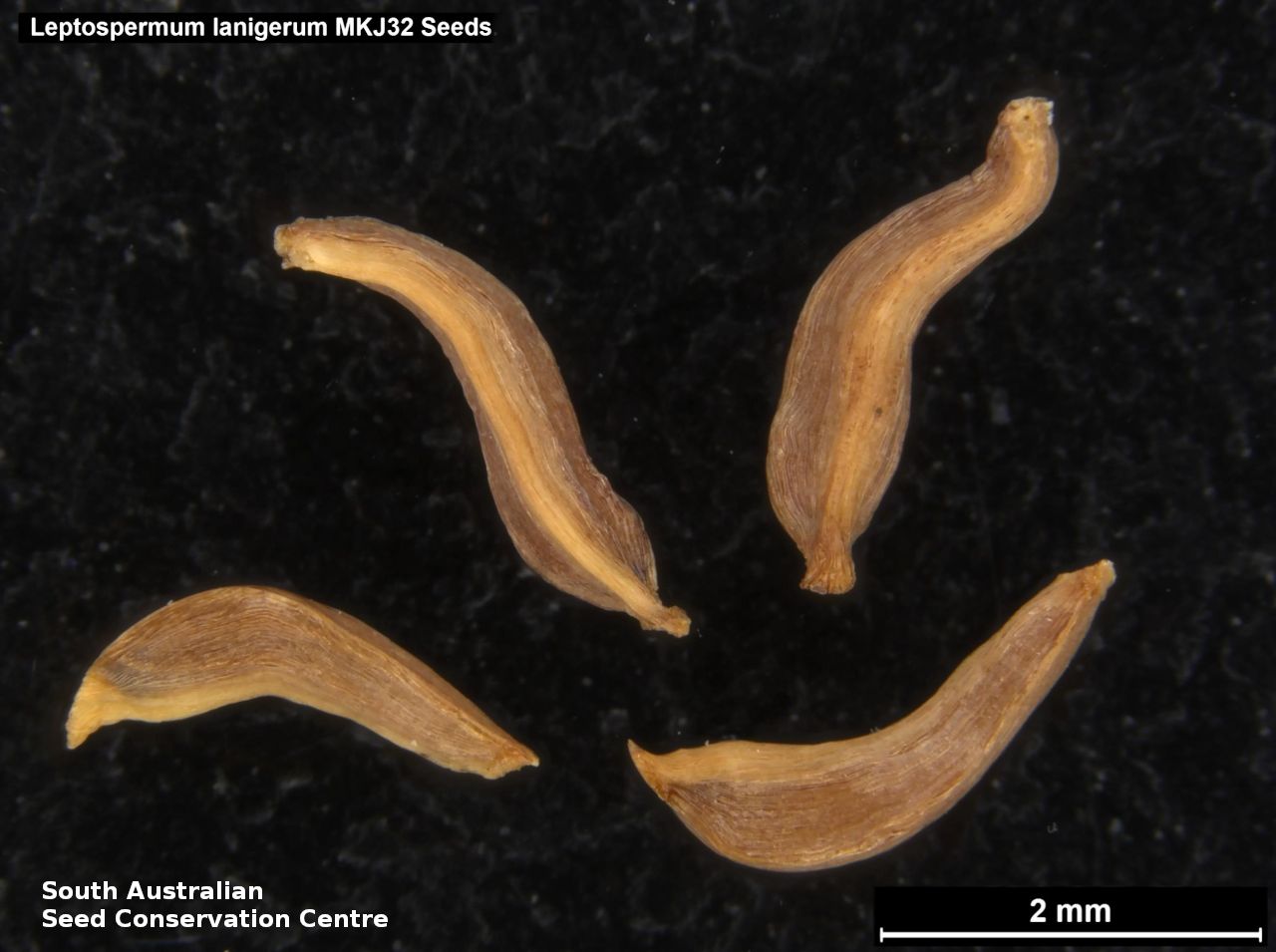


Botanical art
Prior names
Leptospermum pubescens, nom.illeg.
Philadelphus laniger
Philadelphia laniger, orth.var.
Leptospermum lanigerum var. pubescens, nom.illeg.
Leptospermum pubescens, doubtful synoym
Common names
Woolly Tea-tree
Silky Tea-tree
Etymology
Leptospermum from the Greek 'leptos' meaning fine, thin or slender and 'sperma' meaning seed; referring to the narrow seeds of the type species. Lanigerum from the Latin 'laniger' meaning wooly; referring to the hairy leaves, buds and fruits.
Distribution and status
Found on Kangaroo Island, Mount Lofty Ranges and the South-east in South Australia, growing in sandy swamps and fringing watercourses. Also found in New South Wales, Victoria and Tasmania. Native. Uncommon in South Australia. Common in the other states.
Herbarium regions: Murray, Southern Lofty, Kangaroo Island, South Eastern, Green Adelaide
NRM regions: Adelaide and Mount Lofty Ranges, Kangaroo Island, South Australian Murray-Darling Basin, South East
AVH map: SA distribution map (external link)
Plant description
Tall shrub to 4 m high with small stems smooth and larger stems fibrous, persistent. Leaves linear or narrowly elliptic to narrowly obovate, to 20 mm long and 4 mm wide, silky on both surfaces and with a silvery sheen. Inflorescence borne at the ends of short densely leafy side-shoots with white flowers to 15 mm wide. Flowering between October to January. Fruits are woody hairy fruit to 10 mm wide, persistent. Seeds are brown narrow ovoid seed 3 mm long and 0.8 mm wide, with a linear-striate surface pattern. Seed embryo type is folded.
Seed collection and propagation
Collect seeds between January and December. Collect mature capsules, those that are turning brown, hard with non-open valves. Mature fruits can remain on the plant unopened for sometime. Place the capsules in a tray and leave to dry for a week or two. This allows the valves on the fruit to open and release the seeds. Separate the seeds by placing all the materials into a bucket and shaking it to dislodge the seeds. Pass the material through a sieve to separate the unwanted material. The finer material will contain both seeds and frass usually distinguishable from each other. With finer sieves, the seeds can be separated from the frass but this is not essential for storage or propagation. Store the seeds with a desiccant such as dried silica beads or dry rice, in an air tight container in a cool and dry place. From one collection, the seed viability was high, at 90%. Seeds are non-dormant, viable seed should germinate readily.
| Location | No. of seeds (weight grams) | Number of plants | Date collected | Collection number Collection location | Date stored | % Viability | Storage temperature |
|---|---|---|---|---|---|---|---|
| BGA MSB | 123,000 (21.95 g) 123,000 (21.95 g) | 31 | 11-May-2004 | MKJ32 Southern Lofty | 1-Sep-2004 | 90% | +5°C, -18°C |
Number of plants: This is the number of plants from which the seeds were collected.
Collection location: The Herbarium of South Australia's region name.
% Viability: Percentage of filled healthy seeds determined by a cut test or x-ray.